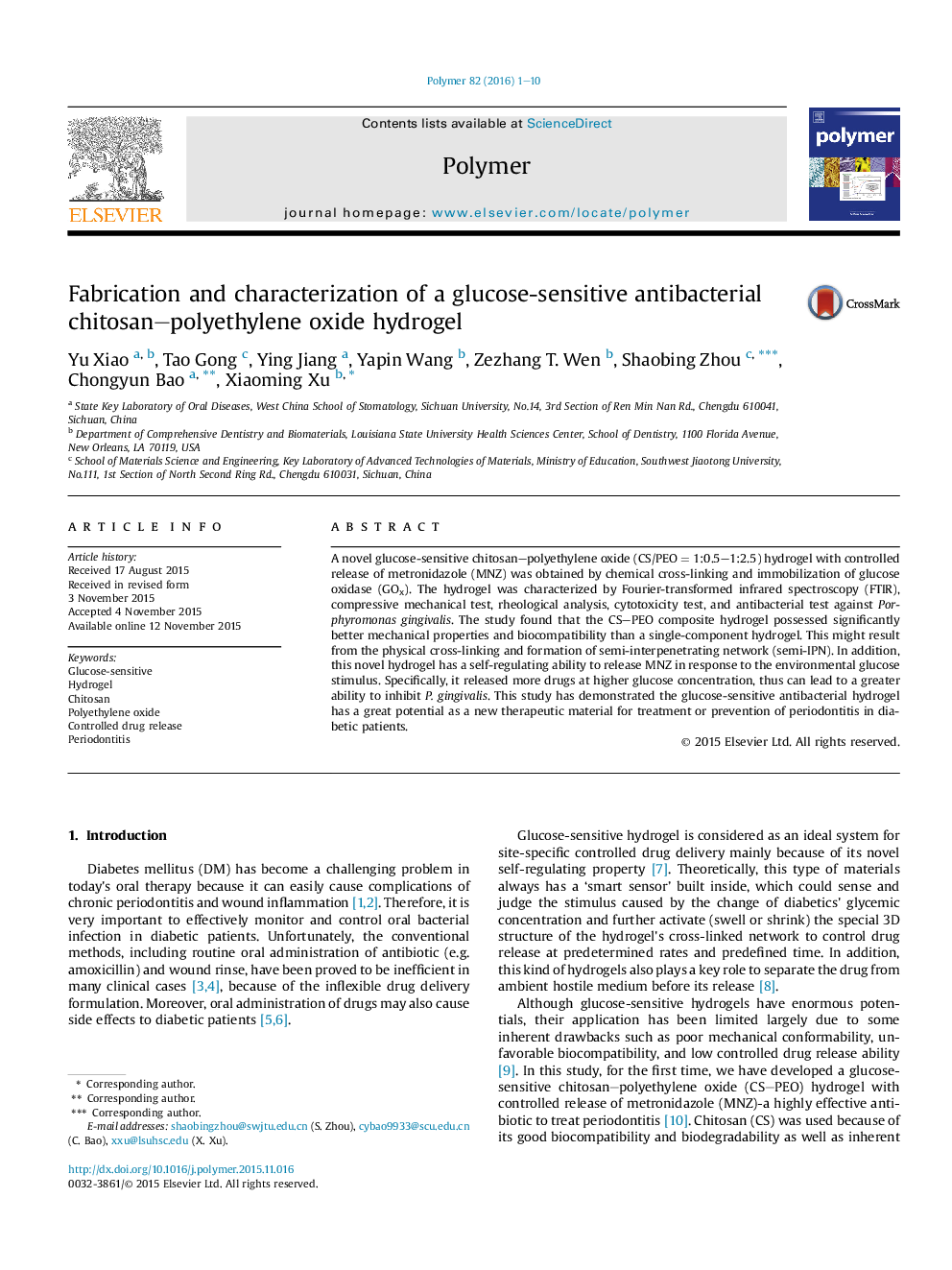| Article ID | Journal | Published Year | Pages | File Type |
|---|---|---|---|---|
| 5179406 | Polymer | 2016 | 10 Pages |
â¢A new glucose-sensitive chitosan-polyethylene oxide (CS-PEO) hydrogel system for controlled release of antibiotics was developed.â¢The mechanical property and biocompatibility of the hydrogel was enhanced with increasing PEO concentration.â¢This hydrogel showed higher drug release and greater ability to inhibit Porphyromonas gingivalis at higher glucose concentration.
A novel glucose-sensitive chitosan-polyethylene oxide (CS/PEOÂ =Â 1:0.5-1:2.5) hydrogel with controlled release of metronidazole (MNZ) was obtained by chemical cross-linking and immobilization of glucose oxidase (GOx). The hydrogel was characterized by Fourier-transformed infrared spectroscopy (FTIR), compressive mechanical test, rheological analysis, cytotoxicity test, and antibacterial test against Porphyromonas gingivalis. The study found that the CS-PEO composite hydrogel possessed significantly better mechanical properties and biocompatibility than a single-component hydrogel. This might result from the physical cross-linking and formation of semi-interpenetrating network (semi-IPN). In addition, this novel hydrogel has a self-regulating ability to release MNZ in response to the environmental glucose stimulus. Specifically, it released more drugs at higher glucose concentration, thus can lead to a greater ability to inhibit P. gingivalis. This study has demonstrated the glucose-sensitive antibacterial hydrogel has a great potential as a new therapeutic material for treatment or prevention of periodontitis in diabetic patients.
Graphical abstractDownload high-res image (324KB)Download full-size image
